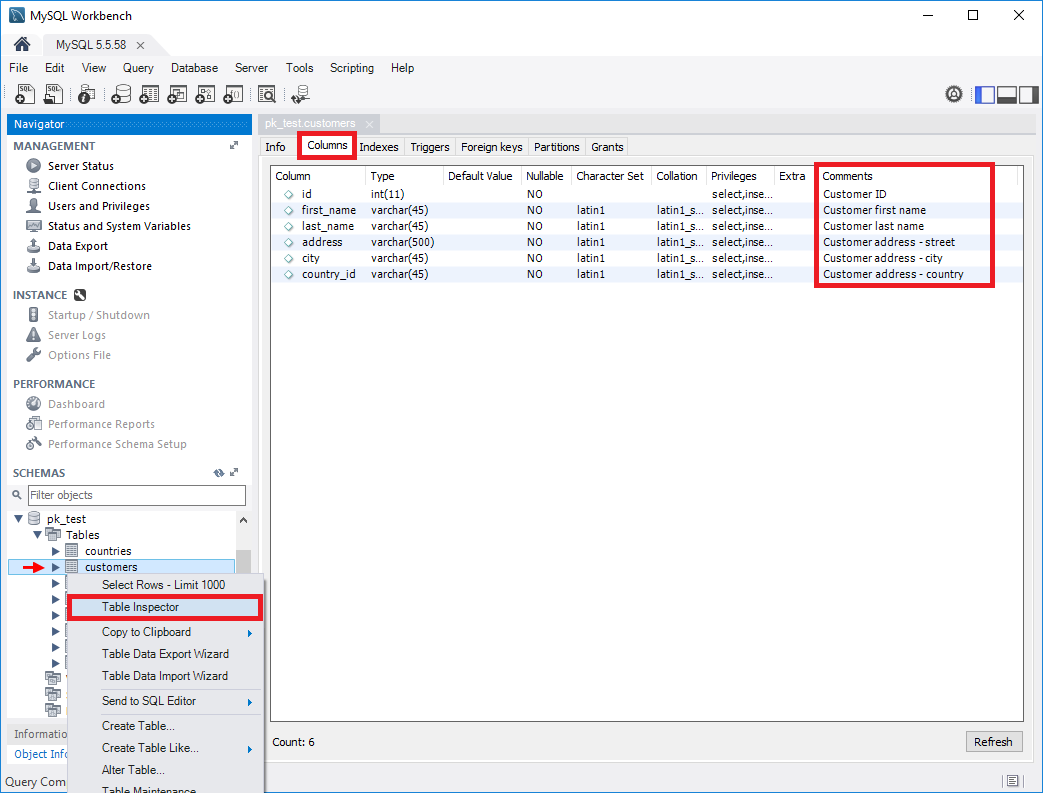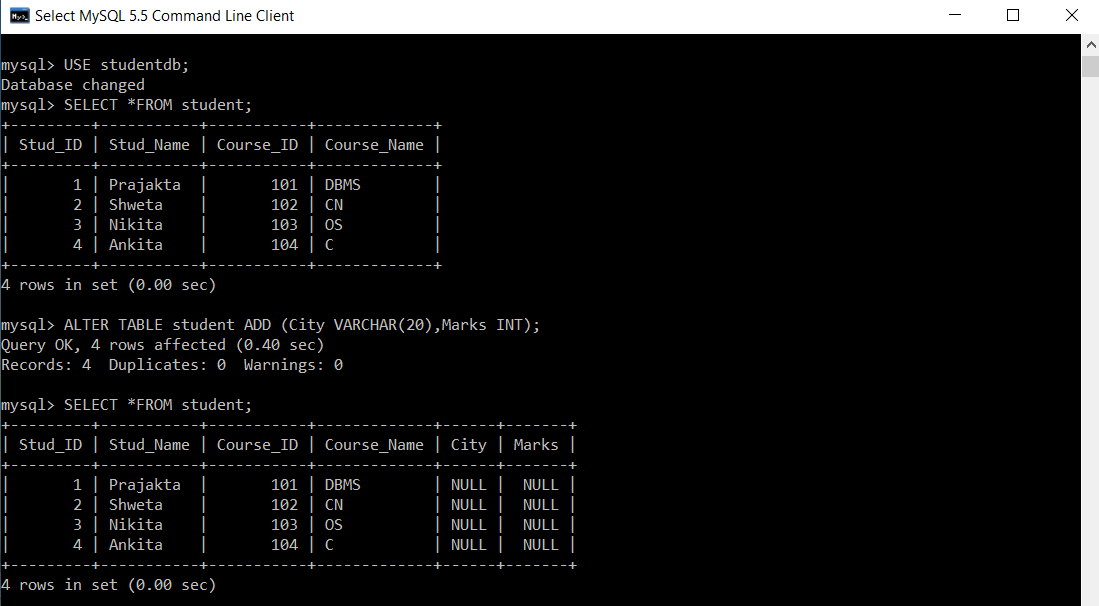

This thread receives the binary log updates. The IO thread connects to the source server and requests updated binary logs.One thread is the IO thread, and the other is the SQL thread: On replica servers, two threads run on each replica server. It's turned on by default for all newly provisioned servers that support up to 16 TB of storage. When a binary log is enabled, the source server writes committed transactions into the binary log. When the term is removed from the software, we'll remove it from this article. This article contains references to the term slave, a term that Microsoft no longer uses. You'll also understand some common causes of increased replication latency on replica servers.
#Mysql alter table add column how to#
In this article, you learn how to troubleshoot replication latency in Azure Database for MySQL.

The read replica feature allows you to replicate data from an Azure Database for MySQL server to a read-only replica server. For example, we try to add the column product_stock which already exist in the table.This article references the term slave, which Microsoft no longer uses. The column you are adding to the table must not exist otherwise MySQL will issue an error. SELECT * FROM Products Īs you can see the product_date column is populated with the default value which is. Now we can check the Products table again. In this case, MySQL adds the column using default values. However, the Products table already has data. Please note that the column product_date is defined as NOT NULL and we haven’t provided any default value for that. ALTER TABLE ProductsĪDD COLUMN product_stock int DEFAULT '0', We can check the Products table using the SELECT statement to see the changes.įourth, we will add two columns product_stock and product_date to the Products table using the single statement. VALUES('Keyboard','Wireless keyboard',20), INSERT INTO Products (product_name, product_description, product_price) Now insert some records into the Products table. In the above statement, we have added a new column product_description after the product_name column. ALTER TABLE ProductsĪDD COLUMN product_description varchar(255) AFTER product_name Third, we add a new column product_description. Here, we haven’t mentioned the position of the new column. ALTER TABLE ProductsĪDD COLUMN product_price decimal(10,2) NOT NULL Second, we will add one column named product_price. Product_id int AUTO_INCREMENT PRIMARY KEY, Let’s understand the concept of MySQL ADD COLUMN with some examples to understand the topic in depth.įirst, we will create a table named Products with two columns: product_id and product_name. Here, each ADD COLUMN statement is separated by a comma( ,). To add more than one column, you use the following syntax: ALTER TABLE tableĪDD column_name_1 column_1_definition ,ĪDD column_name_2 column_2_definition , By default, MySQL adds a column to the last position. Also, you can specify the name column after the AFTER keyword if you want to insert the new column after a specific column. You can use FIRST to insert the new column in the first position. That means after which column you want to add the new column. Third, optionally, you can specify the position of the new column. Here, the COLUMN keyword is optional, you can omit it if you want. Second, specify the name of the new column along with the column definition after the ADD COLUMN keywords. Let’s understand the above syntax in more detail.įirst, you specify the name of the column after the ALTER TABLE keywords. ALTER TABLE table_nameĪDD column_name column_definition The below syntax is to add a column to a table in MySQL. You can also add more than one column to a table using this statement. MySQL allows us to add a column to an existing table using the MySQL ALTER TABLE ADD COLUMN statement. Summary: in this tutorial, you will learn how to add one or more columns to an existing table using the MySQL ADD COLUMN statement.


 0 kommentar(er)
0 kommentar(er)
